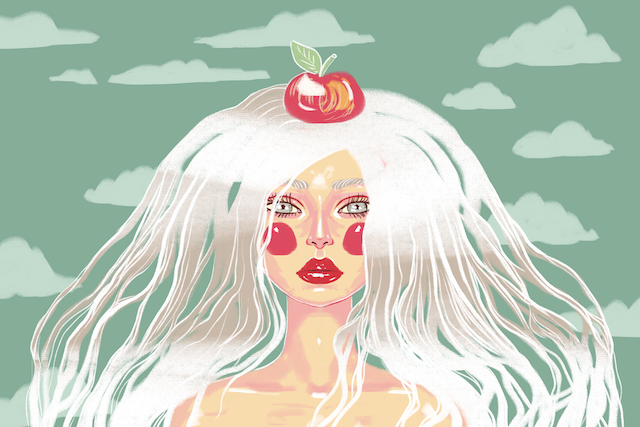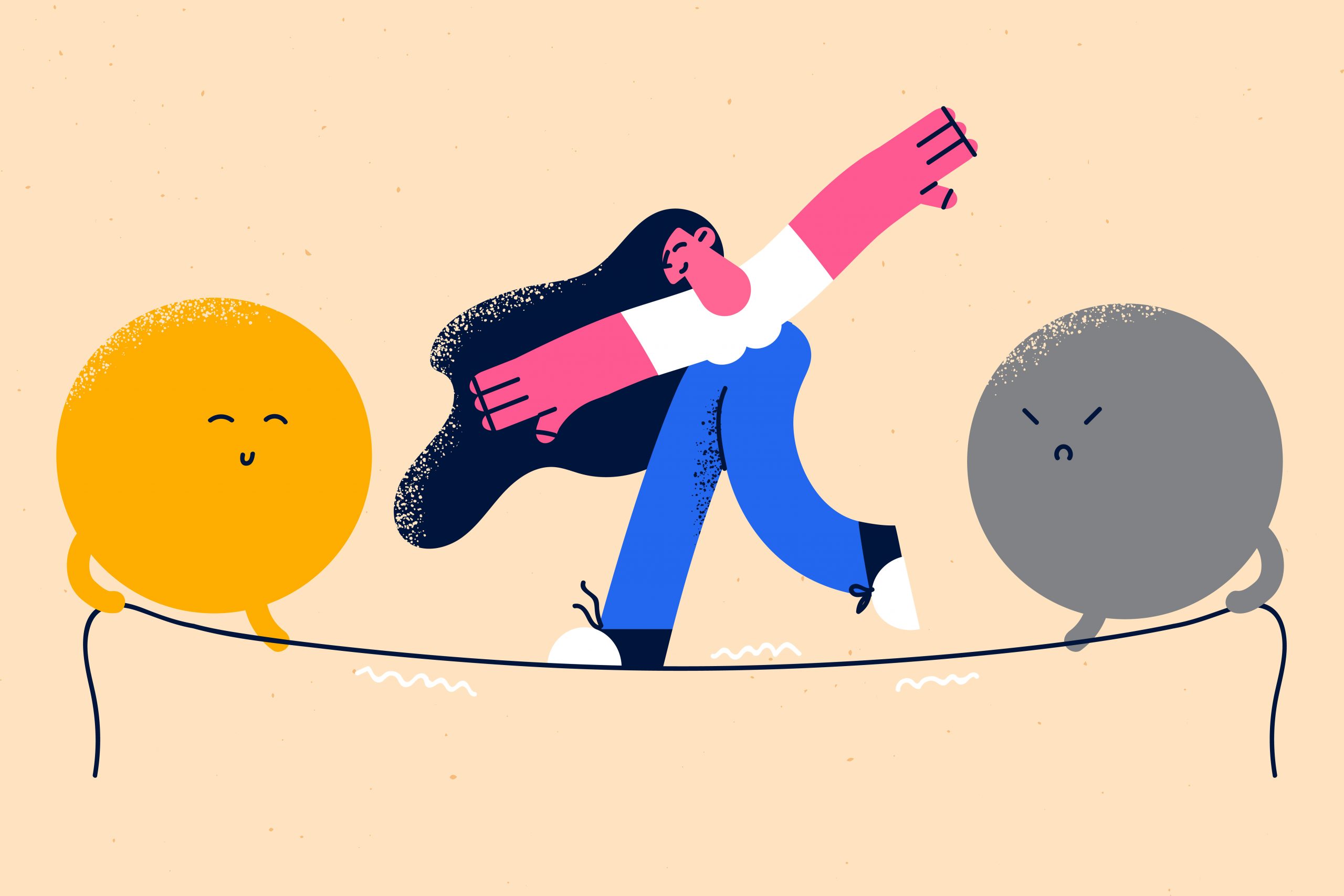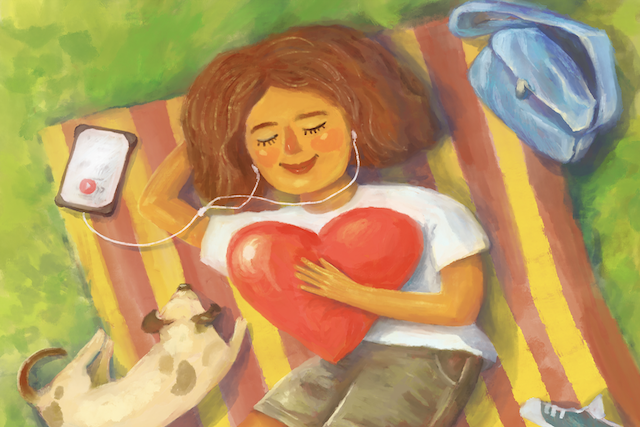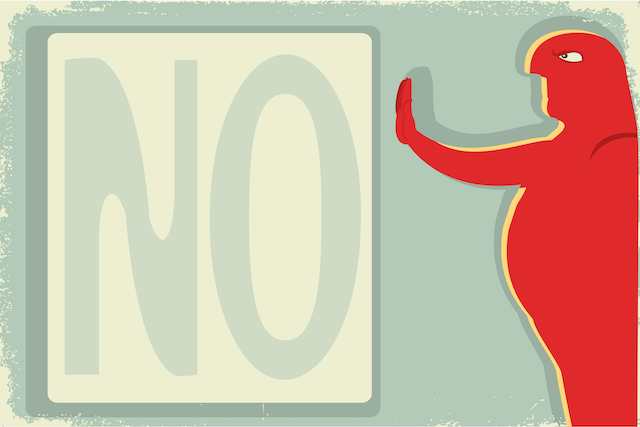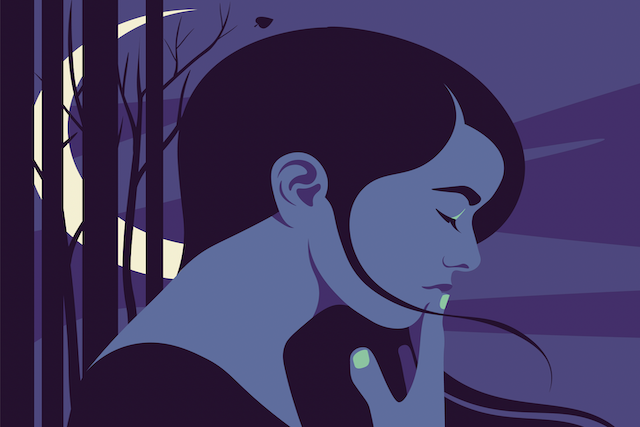
“It is the marriage of the soul with nature that gives birth to imagination.” ~Henry David Thoreau
Before my accident, before we had kids, after we divorced, after my father died from Covid, before the pandemic…
We tend to divide our lives into the before and afters that define our world, whether personally or on a grand scale. These divisions offer context, providing a kind of roadmap that supports us in reflecting on the beauty and darkness, the decisions we made, and who we might be if certain things had never occurred.
I have always believed that the only reason to look back is to learn. Still, I can’t help but wonder: What if, when my marriage ended, I already had mindfulness skills in place? What if I had known the infinite ways nature could soothe my soul? Would my life have been different if I had consciously known that creativity was the safest place to process my emotions?
Perhaps I would not have been paralyzed in grief and sorrow. Maybe my children would have been spared a terrible custody battle. I suppose there is a chance I would not have gone bankrupt. I wonder if I would have ever gotten divorced at all.
Here’s the biggest question: Would I change any of it now?
Not a chance.
As difficult as it all was, I learned that every tool I needed to survive and thrive was right in front of me, and always will be.
My journey led me to a path of sharing what I am most passionate about: helping others find their way, through what I called a “spiritual toolbox”—a personal supply of healthy actions and practices to choose from or combine when things become difficult.
Your spiritual toolbox can hold things like creativity and gratitude practices, exercise, meditation, time in nature, and journaling; a hug, the love of a pet, a hot bath, and even an occasional glass of wine. It’s wonderful to open in the moment, and it’s even better to use as preventative medicine (the toolbox, not the wine).
My “aha” spiritual-toolbox moment came when I accidently discovered the transformative power of combining three tools specifically, as a trifecta. These were: creativity, meditation, and time in nature.
This trifecta insight divided my life into two parts: asleep and awakened.
The first part is quite literal: at age nineteen, I fell asleep while driving and didn’t walk for nearly a year afterward. My accident was the synopsis and ending of a carefree childhood and adolescence, where I suffered no hardship that would have “awakened” me to anything beyond plans for the next evening.
However, while I physically woke up pinned under the tire of my car, I also woke up spiritually: I was alive, and my two best friends who were with me, were uninjured. I was officially “awake” on infinite levels, primarily to the deepest sense of gratitude. And, while I metaphorically “went to sleep” later in other areas of my life, the trifecta was always there to support my awakenings.
From the time I could crawl, my preference was to do it outside. My imagination was my best friend, and my mother could more easily find me digging mud from the creek behind our house rather than playing next door. I made togas from my curtains, spoke in my own language, and told everyone I was “Elizabeth from another land.”
Obviously, I had no way of knowing about the robust and ever-growing body of research indicating that artmaking and creativity have been shown to increase positive emotions, decrease depression and anxiety, reduce stress, and even boost the immune system. That art therapy could boost the memory of Alzheimer’s patients, or reduce the side-effects of chemotherapy.
I didn’t know that indulging creatively literally creates a “cascade of endorphins, serotonin and dopamine, the brain chemicals that affect our well-being,” increasing feelings of joy and contentment.
I hadn’t yet wrapped my head around the fact that everyone is creative, and the benefits have nothing to do with artistic skill. I simply knew that I was happiest when I was being creative, and that artmaking could pull me out of almost any funk.
I was intuitively awakened to creativity.
Then, at age forty, my marriage collapsed. I collapsed with it, down a slippery and medicated slope, into what was later diagnosed as “brief psychosis disorder.” I struggled with insomnia, bankruptcy, a custody battle, losing my home, and losing my business, all at once.
And, while I am a believer in whatever prescribed medications are necessary and helpful, mine were not properly prescribed, so my body and mind simply gave up.
Thankfully, I had recently awakened to meditation.
You can quote me that meditation and mindfulness are the most powerful tools you will ever discover on your path to well-being, in every single aspect of your life. The research on this topic goes back thousands of years.
But here’s where it gets interesting: The brain responds to meditation and mindfulness in a similar way to how it responds to creativity—in both cases, external stimuli is blocked out, and the front of our brain, the prefrontal cortex, quiets down. The pre-frontal cortex, AKA the “gatekeeper,” is like a control center, and is very much involved in emotional regulation, decision making, planning and attention, and self-monitoring.
In other words, dialing back the “gatekeeper” can free us up from planning, worry, projecting, and ruminating. Who wouldn’t feel happier as a result?
Armed with the foundations for my spiritual toolbox, I soldiered on, raising two boys on my own, supporting myself in various marketing and PR endeavors, discovering my inner advocate through non-profit work, writing two books, and facilitating creativity retreats. My love for the outdoors had evolved, and my first choice of exercise was hiking.
I did not know that studies had linked time outside to reduced anxiety and depression, or even that nature inspired creativity. I had no context for nature therapy, where nature is literally characterized as a therapeutic environment.
I hadn’t read the Time Magazine research about how spending time in nature can lower levels of cortisol, improve heart health, promote cancer-fighting cells, help with depression and anxiety, inspire awe, and increase overall well-being. All I knew was that for me, outside was better than inside.
I had awakened to the healing powers of nature.
I began meditating outside, tuning into the natural world. I practiced walking meditation and was awestruck by the beauty and felt sense of connectedness. I was present in a way I had never experienced.
Before long, I began gathering materials from nature and making art with them. I realized that I was more at peace than I had ever been—and there was a definite “carry-over” of calm, peace, and joy into my overall functioning.
I can’t recall if I was on top of a rock in Nevada or in a California canyon, but then came the moment: It was the trifecta of nature, creativity, and mindfulness that was changing my life. When I used these tools together, my depression lifted and my fears dissolved. For the first time in a long time, I experienced hope.
Slowly but surely, my spirit began to heal. I had a safe, accessible, and powerful way to safely process my experience, build resilience, and move forward, joyfully.
Since that time, I have awakened to many other tools that go inside my spiritual toolbox. For now, as an emerging art therapist, meditation junkie, and nature lover, it is my honor to awaken you to simple practices that support you in the most powerful trifecta I know.
Creating Peace on Earth
The peace sign is a powerful symbol that is universally recognized. It connects us, consciously and unconsciously, in something positive. It’s also simple to make, right outside, on the earth, implementing the spiritual toolbox trifecta of creativity, mindfulness, and nature. Here’s how:
Head outside alone or with a friend or loved one. Kids will also enjoy this practice!
Breathe deeply and move more slowly than you normally would, taking in the sights, sounds, and sensations of nature. Pause and let this experience sink in.
Let objects in nature call you: Begin gathering stones, branches, leaves, or wildflowers. Observe how each object looks, feels, and smells as you touch it with your hands. If you are with someone, share your observations with them.
Find the right spot and create your peace symbol. This could be in your own yard or in a public place, like a park or beach, where other people can see and enjoy it.
Have fun, indulge, and witness. No one is looking! Sink into your experiences and senses for this brief time. Take a few long, deep breaths, feeling and smelling the earth.
Reflect on the peace symbol. What does it mean to you? What memories or sensations arise in your body as you reflect on this powerful symbol?
Set an intention to bring forward any feelings of peace and wellness that you have experienced in this practice.
Be patient and honor your journey. Wellness and healing are lifelong endeavors. Stepping into intentional self-care is an act of compassion, for yourself and the world.
Be grateful. By creating “peace on earth,” you are implementing the healing trifecta while sharing a powerful message that others might see and experience on their own nature walk. You are also awakening to peace, within yourself.
![]()
About Elizabeth Bryan-Jacobs
Elizabeth Bryan-Jacobs is an artist, emerging art therapist and bestselling Chicken Soup for the Soul and Soul Models author. She is passionate about sharing the healing powers of art-therapeutic interventions in groups and in hospice settings. Elizabeth and her husband, artist Bobby Jacobs, also founded “The Spread Your Wings Project,” a 501 (c) 3 devoted to sharing the profound benefits of the arts and art therapy. To learn more, visit .elizabethbryanjacobs.com , creativeawakenings.net and thespreadyourwingsproject.org.
Get in the conversation! Click here to leave a comment on the site.
The post Mindfulness, Creativity, and Nature: A Healing Trifecta for Lasting Peace appeared first on Tiny Buddha.
from Tiny Buddha https://ift.tt/56Js37M


